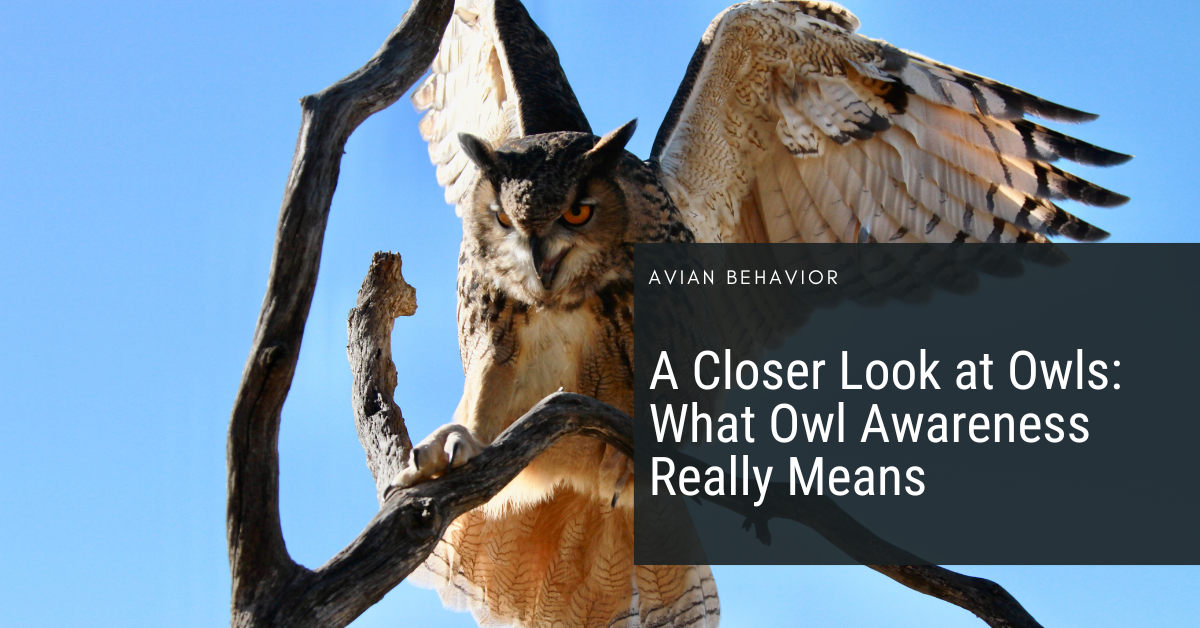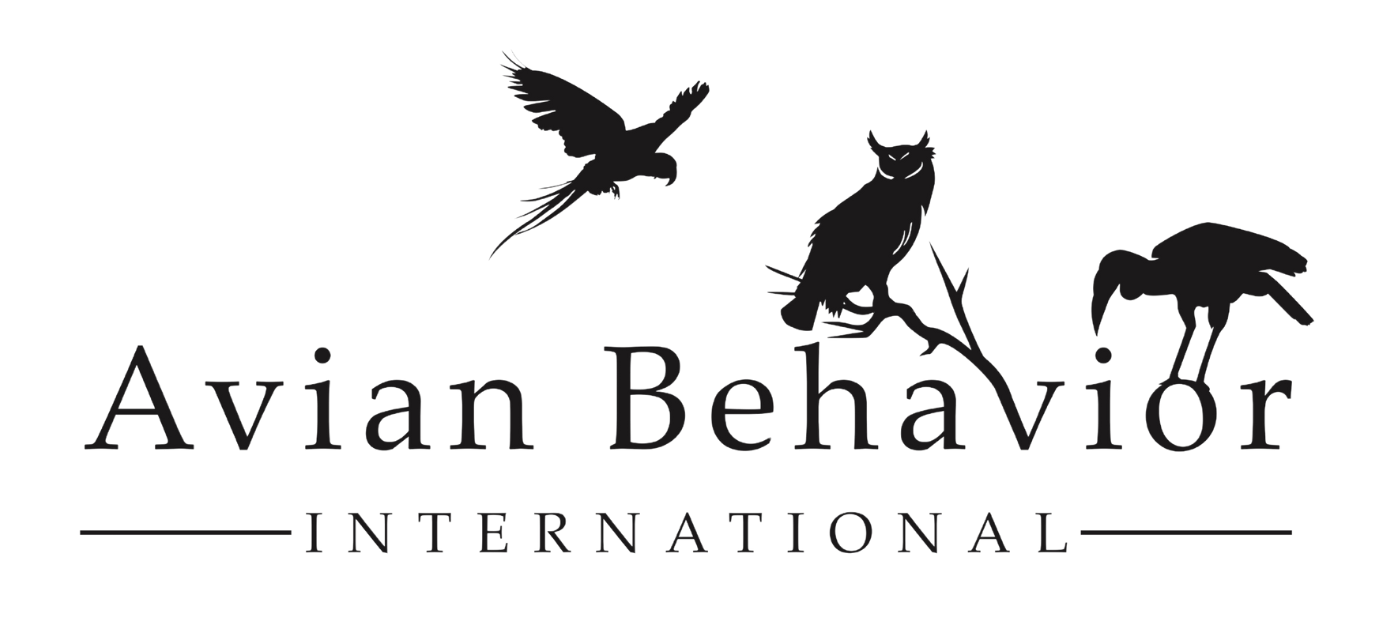
07 Aug A Closer Look at Owls: What Owl Awareness Really Means
August 4 was International Owl Awareness Day — and around here, that’s every day.
At Avian Behavior Conservancy, our owls aren’t just part of the landscape. They’re our colleagues in education, opening up conversations about ecosystems, conservation, and how humans fit into it all. Every day, they help us tell stories that matter — stories about their wild counterparts and the choices we make that affect them.
Meet the Owls of ABC
We work with seven incredible owl species, each with their own unique behaviors, adaptations, and personalities:
- Guinness – Eurasian eagle owl
- Ripley – Spectacled owl
- Beatrix – Barn owl
- Tina – Burrowing owl
- Nigel – Eastern screech owl
- Aldo – Great horned owl
- Nelson – White faced owl
All of these owls are trained through choice-based methods to be confident, interactive, and comfortable in a wide range of settings. Whether it’s a group visit, a public program, or a quiet one-on-one session, their behaviors are shaped to support their well-being and communicate who they are — not who we want them to be.
Why Owl Training Matters
When someone meets an owl up close, it leaves a lasting impression. But that experience only has impact if the owl is relaxed enough to show natural behaviors and engage on their terms.
That’s where our training comes in. Our sessions are designed with transparency and trust — to make sure every owl has the tools they need to navigate novel settings, interact safely with the public, and feel supported in their role.
This kind of training helps us do more than just inspire awe. It allows us to share real-world conservation topics like:
- Secondary poisoning from rodenticides
- The risks of glue traps to non-target wildlife
- How landscaping choices can support raptor habitats
- The ecological role of owls in managing rodent populations
Rethinking Owl Intelligence
We sometimes hear that owls “aren’t that smart.” But that’s a narrow view of intelligence based on human metrics. In reality, owls are highly specialized. Their brains are wired for precision — processing complex auditory and visual information together to locate prey they can’t even see.
Barn owls, for example, have been shown to make predictive calculations in complete darkness. Their adaptations might not look like tool use or mimicry, but that doesn’t make them less remarkable.
Come Meet the Owls
Want to get to know these birds better?
Join us for an Owl Handling Session, come on an Owl Prowl, or book a Bird of Prey Experience to see how owls interact in a real training session. These experiences are designed to deepen your understanding of who owls are, what they need, and how you can help protect them.
Owl Awareness isn’t about one day a year. It’s about creating space for connection, conversation, and care — and doing that year-round.
Book your Avian Experience to see what it’s all about.

